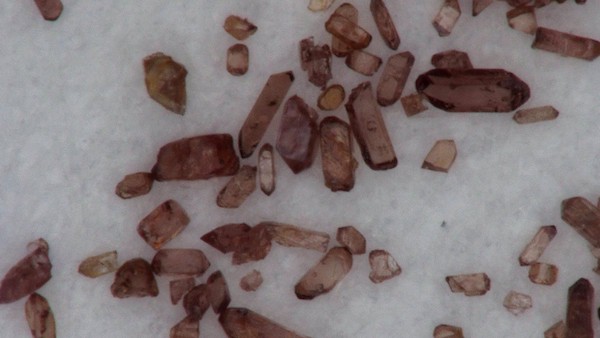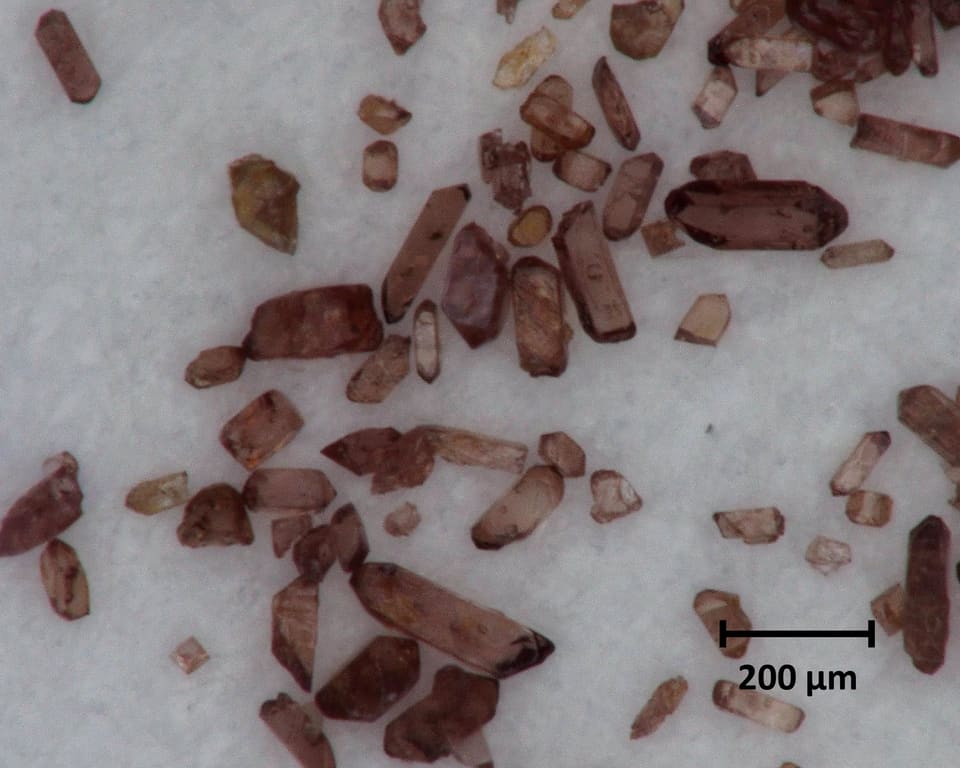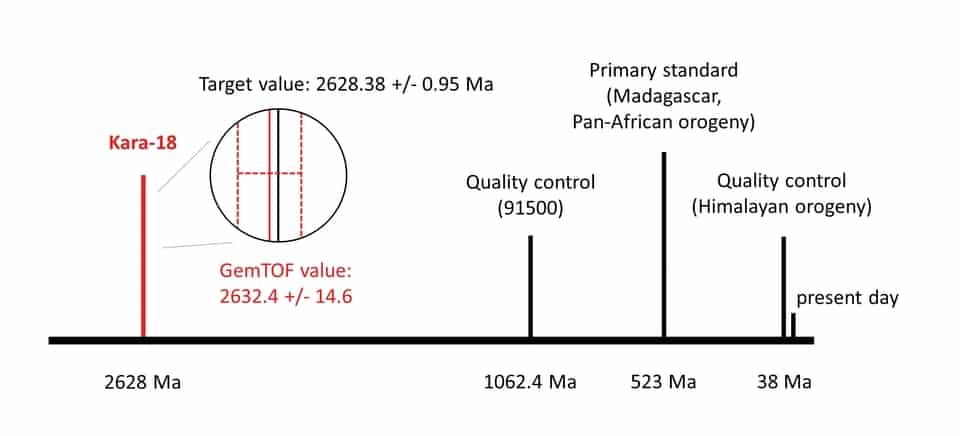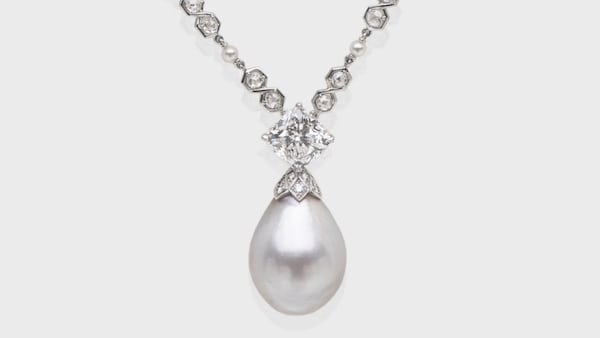
GemTOF quality control: participation in 2nd age dating blind round robin dating test
by Dr. Wälle & Dr. H.A.O. Wang, first published in Facette 28 (May 2023)
Age dating of minerals and their associated rock formations is important in geoscience research in order to be able to reconstruct and understand geological processes and Earth’s
history. To be able to date a mineral, it is necessary that this mineral incorporates an element/isotope that decays radioactively over time. Uranium is a common radioactive element used for this as it has a fairly long half-life. This allows the dating of minerals that formed a few hundred thousand to a few billion years ago, covering most of Earth’s geological past. It also has two different isotopes which decay with different half- lives into different lead isotopes. This provides two independent ages per sample and thus allows for an internal validation of dating results through comparison.
Zircon is among the most commonly dated minerals using the uranium- lead system in geosciences due to its suitability as it has reasonably high uranium concentrations and rarely incorporates lead during crystal growth. An increasing number of laboratories worldwide are doing zircon dating using laser ablation ICP-MS. The International Association of Geoanalysts (IAG) introduced a blind round robin test for zircon dating to enhance accuracies, data quality and improve inter-laboratory comparability. After the rst successful round in 2019 and with some delays, the zircon grains for the second round were distributed in autumn 2021 giving the laboratories time until winter 2021/22 to report their results. The final report was released last summer. Blind round robin tests are one of the best methods to ensure and test the comparability and reliability of results produced by analytical laboratories. A batch of the same sample is sent out to each participating laboratory, without the lab knowing the expected result which is only released after all labs have submitted their results. It is also not known which laboratories are participating and all participants are anonymous in the report.
Dating of a zircon inclusion can also provide important clues of the origin of gemstones like sapphires and rubies. SSEF has therefore participated in the second G-Chron zircon dating round robin test to ensure that accurate results are produced by the GemTOF system in place at SSEF.
“Kara-18” blind round robin test
The zircons “Kara-18”, named after Karara Station, the nearest geographic feature from the collection site, originate from a large granitic pluton in the Murchison Province of the Yilgarn Craton of Western Australia. The 310 kg of collected rock was crushed and milled to a < 1mm grain size fraction. Zircons were separated from the other minerals by a Wilfley table, a Frantz magnetic and finally a heavy liquid separation. Ending up with 47.4 g of zircon crystals with most being less than 0.3 mm in size (Figure 1). Each participating laboratory received about 90mg for testing. The target value of 206Pb/238U age of 2628.38 +/- 0.95 Ma (million years) was provided by analyses in three different isotope dilution thermal ionization mass spectrometry (ID-TIMS) facilities. Homogeneity of the zircon sample material was validated by secondary ion mass spectrometry (SIMS) at the Helmholtz Centre in Potsdam. A total of about 50 laboratories participated in the test and submitted results.

Accurate age result by GemTOF at SSEF
After having some zircon grains mounted on an epoxy puck at the University of Basel, those zircons were analyzed by our routinely used dating method for zircon inclusions in gemstones. A 523 Ma old zircon from Sri Lanka was used to calibrate the instrument and two other zircons were analyzed as well for quality control. Distributed over several measurement sessions on different days, around 30 grains of the Kara-18 zircons were analyzed with the GemTOF system at SSEF. This resulted in an average 206Pb/238U age of 2632.4 +/-14.6 Ma (mean +/- one standard error) which is in excellent agreement with the target value. This is a remarkably accurate result as these zircons exceed the range of our quality control which goes to 1062.4 Ma and we are normally dealing with zircons in the range of ca. 25 Ma from the Himalayan origin or ca. 550 Ma old ones from Madagascar and Sri Lanka. It is reassuring as our method also works completely ne outside its intended range and this con firms the accuracy of our dating method. We plan to further participate in the round robin U/Pb dating program of the IAG to ensure the high quality of our analytical results in future.


